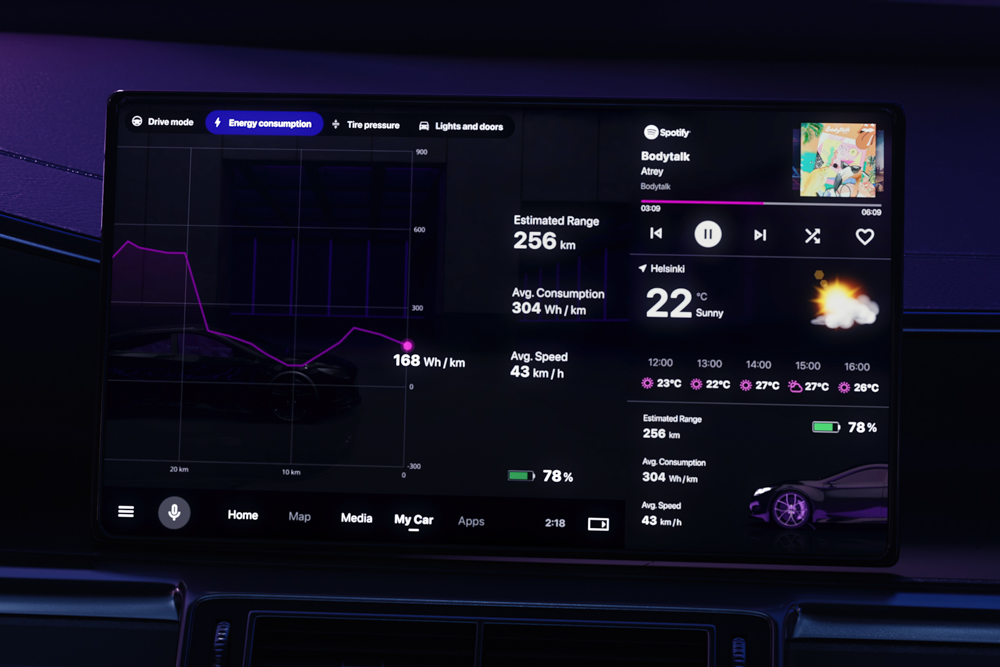Put your developers in the driving seat
September 13, 2022 by Miao Luo | Comments
Qt for Android Automotive helps developers create visually stunning user interfaces and experiences for different in-car displays – all with the same code base. Here’s how.
Modern vehicles are becoming a lot more complex, especially as they go autonomous. More and more information about the vehicle’s intentions needs to be shared with the driver, which means in-car displays are getting bigger and are increasing in number. The use of 3D is growing too.
As cockpit complexity grows, some car makers have decided to take Android Automotive into use for developing in-vehicle infotainment systems. We’ve always been very strong in the car cockpit through Qt for Automotive and have a long history with automotive customers. Now we’re putting a lot of this passion and experience into developing Qt for Android Automotive as the industry shifts in that direction.
Qt for Android Automotive gives developers more freedom
Qt for Android Automotive solves the main challenge OEMs face when developing in-vehicle interfaces: traditional tools and workflows are not optimized for automotive work. Whether you use Android Studio or another application-native workflow, it’s simply not going to have the purpose-made feel or offer the freedom that Qt for Android Automotive does.
This is because Qt for Android Automotive allows the same code base to be used for creating the UI and UX of any in-car display – be it for entertainment, driver information, or for the sharing of data between different systems within the car.
Using traditional tools and workflows to develop the UX and UI for different screens is time-consuming and costly. Qt for Android Automotive eliminates this complexity by allowing human-machine interfaces (HMIs) in the cockpit to be built using a unified toolchain and framework. Qt for Android Automotive also enables the freedom to switch to another underlying automotive OS in the future, as Qt can be used for any OS and hardware platform.

Create the experiences the drivers want
With Qt for Android Automotive, you can work with advanced 3D graphics on Android. This allows developers to build a visually stunning and intuitive digital twin of the actual vehicle in a real-time 3D space. Qt for Android Automotive also gives developers the freedom to create both 2D and 3D HMIs, and seamlessly combine the two.
We’ve ready-made integrations to the Android Car APIs too. These are needed for information such as headlights or blinkers on or off, car temperature, and more. As the APIs are integrated within Qt for Android Automotive, you can concentrate on building the HMIs using Qt/QML. This directly communicates the vehicle properties from the Android Automotive OS. It also saves a lot of time in development.
With Qt, all applications and designs are componentized, re-usable, and scalable between different projects and platforms. This significantly improves lifetime maintenance, as applications and UIs created with Qt are compatible with any Android version. Having a unified toolchain across the digital cockpit also means easier sharing of UI component libraries across teams and projects. It’s straightforward to set up inter-domain communications between cockpit applications too.
Isn’t it time you put your developers in the driving seat with Qt for Android Automotive? Explore the use cases for unified UX across connected cars.
Blog Topics:
Comments
Subscribe to our newsletter
Subscribe Newsletter
Try Qt 6.10 Now!
Download the latest release here: www.qt.io/download.
Qt 6.10 is now available, with new features and improvements for application developers and device creators.
We're Hiring
Check out all our open positions here and follow us on Instagram to see what it's like to be #QtPeople.

